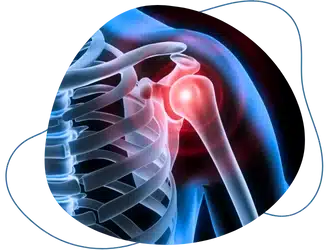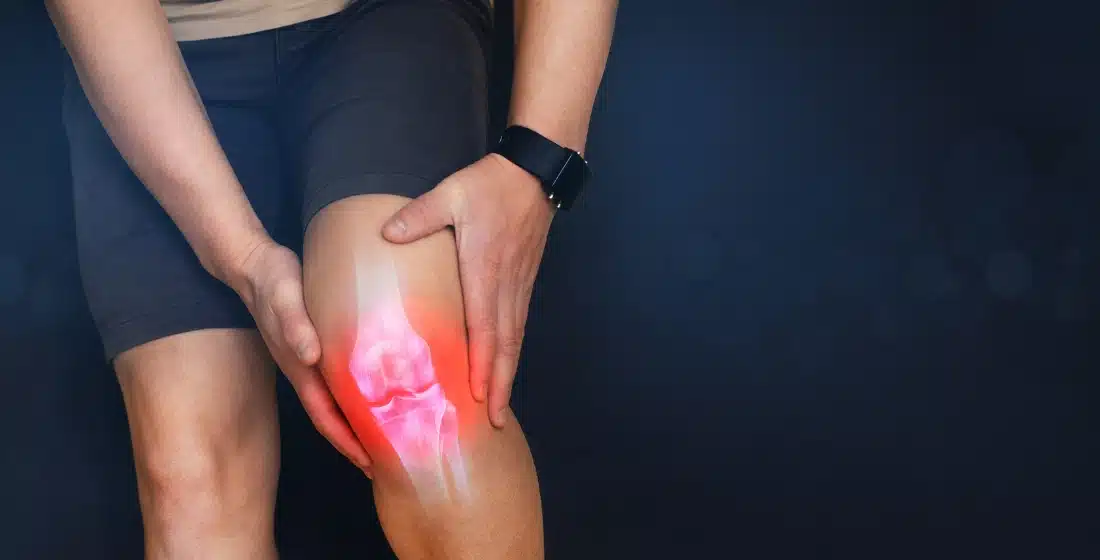Stemwell’s commitment to advanced technologies, translational medicine, and umbilical cord-derived MSCs
Why this Day Matters
World Arthritis Day (WAD) takes place every year on October 12—in 2025, it falls on Sunday— to spotlight the lived experiences of individuals affected by arthritis and related rheumatic and musculoskeletal diseases (RMDs).

First launched in 1996 by Arthritis and Rheumatism International, and now supported worldwide by organizations like EULAR, WAD serves as a global platform to promote awareness, encourages early detection, advocate for effective treatments, and strengthen support for patients and caregivers.
Arthritis’ footprint is immense. It affects ~500 million people worldwide and nearly 60 million in the U.S. (about 1 in 4 adults), contributes to ~1 million hospitalizations annually, and frequently co-exists with other conditions—~47% of adults with arthritis have at least one comorbidity. Non-traumatic joint disorders rank among the five most costly health conditions in adults, and people with arthritis lose more workdays than those with any other medical condition. These facts remind us why timely, evidence-guided, patient-centered care is essential.
Stemwell’s focus: Advanced, precise, and translational
At Stemwell, we align our clinical pathways with four pillars:
- Advanced technologies
We track and adopt scientifically validated innovations—hydrogels, nanoparticles, liposomes, and exosome-based delivery—that improve intra-articular drug retention, tissue penetration, and controlled release, supporting cartilage repair and personalization (Wu et al., 2025; Chen, Jiang, Zhu, He, & Chen, 2025). - Precision medicine
Large-scale genomics and multi-omics (transcriptomics, proteomics, metabolomics) are redefining osteoarthritis (OA) heterogeneity. Studies implicate TGFβ, FGF, WNT, BMP, retinoic acid, and circadian pathways and reveal drug-repurposing opportunities where implicated genes encode targets of approved medicines (Hatzikotoulas et al., 2025; Rai et al., 2024). This informs tailored strategies rather than one-size-fits-all care. - Translational medicine
We bring proven insights from bench to bedside—siRNA therapies, cellular engineering, biofabrication, improved imaging, and rehabilitation—through careful, stepwise integration into clinical practice (Klimak et al., 2021; Scanzello et al., 2024; Liu, Liu, Li, & Tan, 2024). - Regenerative medicine
Our regenerative protocols prioritize umbilical cord-derived mesenchymal stem cells(UC-MSCs). We generally refrain from using cells derived from bone marrow or adipose tissue.. Our primary goals are to alleviate pain, enhance physical function, and promote tissue repair. Throughout this process, we remain committed to transparency—clearly distinguishing between treatments that are well-established, those that are emerging, and those still undergoing active investigation.
What Science Says About MSCs for Arthritis
Across preclinical and clinical research, mesenchymal stem cells (MSCs) have shown potential to reduce pain and improve function in OA after intra-articular administration, with favorable safety profiles (minor, transient adverse events more common; serious events rare). High-quality trials are still needed to determine dose, cell viability, delivery routes, and long-term outcomes (Carneiro et al., 2023; Chen, Cheng, Wu, et al., 2023; Mesa et al., 2023).

In RA, MSCs and MSC-derived extracellular vesicles (EVs) demonstrate anti-inflammatory and immunomodulatory effects, with systematic reviews indicating overall safety and signals of clinical benefit; durability beyond 12 months may require repeat dosing, and more robust trials are warranted (Klyucherev et al., 2025; Mesa et al., 2023).
Innovations in biomaterials and immunoengineering—including 3D-printed scaffolds and nanozyme-reinforced hydrogels—aim to enhance MSC survival, targeting, and immune re-balancing, further supporting cartilage and bone microenvironment repair (Tevlin et al., 2022; Zhao et al., 2025). Interventional guidance (e.g., STEP Guidelines for knee pain) reinforces patient-centered, evidence-based protocols (Hunter et al., 2022).
Umbilical Cord-Derived MSCs (UC-MSCs): Stemwell’s Regenerative Backbone
The horizon stretches even further than injections of stem cells:
- Bioengineered Patches: Living bandages infused with stem cells, applied directly to damaged areas [7].
- 3D Bioprinting: Printing heart tissue scaffolds to help children born with congenital heart defects [8].
- Next-Gen Therapies: Treatments that not only restore blood flow but also repair the heart’s electrical rhythm and relaxation capacity [9].
These breakthroughs could transform how we think about heart disease, from an incurable decline to a condition we can truly heal.
Our Commitment: From Research to Patient Care
Why UC-MSCs? UC-MSCs are sourced from donated birth tissue and processed under strict quality systems. They combine robust immunomodulatory capacity with practical considerations for standardization and off-the-shelf availability—key attributes for precision and scalability.
In osteoarthritis (OA)
- Clinical signals: A systematic review and meta-analysis reports that intra-articular UC-MSCs can improve pain and function in knee OA, while emphasizing the need for larger, longer-term randomized trials to confirm efficacy, safety, and dosing (Xiao, Wang, Li, Luo, & Li, 2024).
- Mechanisms: UC-MSCs appear to reduce inflammation (e.g., IL-10, TGF-β1), inhibit chondrocyte apoptosis, and promote matrix synthesis (Pan et al., 2023; Kim, Yang, Park, et al., 2019). Newer work suggests they may slow “cell aging” in cartilage by blocking the STING–NF-κB pathway (Zhang et al., 2025).
- Where to inject: In models, intra-articular and subchondral delivery both show benefit; subchondral injection may better support remodeling of subchondral bone (a driver of pain and structural progression) (Wu, Xu, Wu, et al., 2025).
In rheumatoid arthritis (RA)
- Immune re-balancing: UC-MSC-derived exosomes can restore Th17/Treg balance and reduce pro-inflammatory cytokines in arthritis models (Fu et al., 2022).
- Targeting pathologic synovium: UC-MSCs can induce apoptosis in fibroblast-like synoviocytes, cells that perpetuate RA synovitis and joint damage (Chiu, Liang, Hwang, & Wang, 2023).
- Required signaling: TNF receptor 1 signaling appears necessary for the anti-inflammatory and pro-regenerative effects of UC-MSCs in RA models—insight that may inform patient selection and combination strategies (Liu, Wang, Zhang, et al., 2025).
- Cell-free potential: UC-MSC exosomes offer a promising cell-free therapeutic avenue under active investigation (Fu et al., 2022; Morente-López et al., 2022).
Safety and expectations. Short-term effects are usually mild (e.g., transient post-injection soreness); serious adverse events are rare in the broader MSC literature, but large, long-term RCTs specific to UC-MSCs in human OA/RA populations are needed to establish definitive safety, efficacy, and optimal delivery (Mesa et al., 2023; Xiao et al., 2024).
Bringing It All Together for Patients
- Personalized evaluation: We take a comprehensive look at your symptoms, physical function, imaging results, coexisting conditions, and personal goals to build a care plan tailored to you.
- Care plan clarity: We walk you through what’s well-established versus what’s still emerging, openly discuss potential benefits and risks, and outline a clear path for follow-up..
- Integrated, Multimodal support: Regenerative therapies are most effective when combined with physical activity, targeted rehabilitation, and thoughtful lifestyle choices. We help you build a plan that supports healing from all angles..
- Tracking outcomes: We monitor validated pain and function scores over time, using real data to refine and adjust your care as your progress unfolds.
How to Participate in World Arthritis Day
- Wear blue and share accurate facts to reduce stigma.
- Join local or online events to learn about new options.
- Talk to your clinician early if pain or stiffness limits daily life—early action can change the trajectory.
- Support research and advocacy that accelerate safe, effective treatments.
References
- Carneiro, D. C., Araújo, L. T., Santos, G. C., et al. (2023). Clinical trials with mesenchymal stem cell therapies for osteoarthritis: Challenges in the regeneration of articular cartilage. International Journal of Molecular Sciences, 24(12), 9939. https://doi.org/10.3390/ijms24129939
- Chen, Y., Cheng, R. J., Wu, Y., et al. (2023). Advances in stem cell-based therapies in the treatment of osteoarthritis. International Journal of Molecular Sciences, 25(1), 394. https://doi.org/10.3390/ijms25010394
- Chen, Y., Jiang, H., Zhu, H., He, J., & Chen, L. (2025). Theranostics of osteoarthritis: Applications and prospects of precision targeting nanotechnology. International Journal of Pharmaceutics, 676, 125548. https://doi.org/10.1016/j.ijpharm.2025.125548
- Chiu, Y. H., Liang, Y. H., Hwang, J. J., & Wang, H. S. (2023). IL-1β-stimulated human umbilical cord mesenchymal stem cells ameliorate rheumatoid arthritis via inducing apoptosis of fibroblast-like synoviocytes. Scientific Reports, 13(1), 15344. https://doi.org/10.1038/s41598-023-42585-1
- Fu, Y., Li, J., Zhang, Z., et al. (2022). Umbilical cord mesenchymal stem cell-derived exosomes alleviate collagen-induced arthritis by balancing the population of Th17 and regulatory T cells. FEBS Letters, 596(20), 2668–2677. https://doi.org/10.1002/1873-3468.14460
- Hatzikotoulas, K., Southam, L., Stefansdottir, L., et al. (2025). Translational genomics of osteoarthritis in 1,962,069 individuals. Nature, 641(8065), 1217–1224. https://doi.org/10.1038/s41586-025-08771-z
- Hunter, C. W., Deer, T. R., Jones, M. R., et al. (2022). Consensus guidelines on interventional therapies for knee pain (STEP guidelines) from the American Society of Pain and Neuroscience. Journal of Pain Research, 15, 2683–2745. https://doi.org/10.2147/JPR.S370469
- Kim, E. H., Jeon, S., Park, J., et al. (2025). Progressing future osteoarthritis treatment toward precision medicine: Integrating regenerative medicine, gene therapy and circadian biology. Experimental & Molecular Medicine, 57(6), 1133–1142. https://doi.org/10.1038/s12276-025-01481-6
- Kim, H., Yang, G., Park, J., et al. (2019). Therapeutic effect of mesenchymal stem cells derived from human umbilical cord in rabbit temporomandibular joint model of osteoarthritis. Scientific Reports, 9(1), 13854. https://doi.org/10.1038/s41598-019-50435-2
- Klimak, M., Nims, R. J., Pferdehirt, L., et al. (2021). Immunoengineering the next generation of arthritis therapies. Acta Biomaterialia, 133, 74–86. https://doi.org/10.1016/j.actbio.2021.03.062
- Klyucherev, T. O., Peshkova, M. A., Yurkanova, M. D., et al. (2025). Advances in regenerative therapies for inflammatory arthritis: Exploring the potential of mesenchymal stem cells and extracellular vesicles. International Journal of Molecular Sciences, 26(12), 5766. https://doi.org/10.3390/ijms26125766
- Liu, B., Liu, T., Li, Y., & Tan, C. (2024). Innovative biotherapies and nanotechnology in osteoarthritis: Advancements in inflammation control and cartilage regeneration. International Journal of Molecular Sciences, 25(24), 13384. https://doi.org/10.3390/ijms252413384
- Liu, G., Wang, H., Zhang, C., et al. (2025). Tumor necrosis factor receptor 1 is required for human umbilical cord-derived mesenchymal stem cell-mediated rheumatoid arthritis therapy. Cell Transplantation, 34, 9636897241301703. https://doi.org/10.1177/09636897241301703
- Mesa, L. E., López, J. G., López Quiceno, L., et al. (2023). Safety and efficacy of mesenchymal stem cells therapy in the treatment of rheumatoid arthritis disease: A systematic review and meta-analysis of clinical trials. PLOS ONE, 18(7), e0284828. https://doi.org/10.1371/journal.pone.0284828
- Morente-López, M., Mato-Basalo, R., Lucio-Gallego, S., et al. (2022). Therapy free of cells vs human mesenchymal stem cells from umbilical cord stroma to treat the inflammation in osteoarthritis. Cellular and Molecular Life Sciences, 79(11), 557. https://doi.org/10.1007/s00018-022-04580-z
- Pan, X., Li, X., Zhang, L., et al. (2023). Umbilical cord mesenchymal stem cells relieve osteoarthritis in rats through immunoregulation and inhibition of chondrocyte apoptosis. Scientific Reports, 13(1), 14975. https://doi.org/10.1038/s41598-023-42349-x
- Rai, M. F., Collins, K. H., Lang, A., et al. (2024). Three decades of advancements in osteoarthritis research: Insights from transcriptomic, proteomic, and metabolomic studies. Osteoarthritis and Cartilage, 32(4), 385–397. https://doi.org/10.1016/j.joca.2023.11.019
- Scanzello, C. R., Hasty, K. A., Chung, C. B., et al. (2024). Teaming up to overcome challenges toward translation of new therapeutics for osteoarthritis. Journal of Orthopaedic Research, 42(12), 2659–2672. https://doi.org/10.1002/jor.25944
- Tevlin, R., desJardins-Park, H., Huber, J., et al. (2022). Musculoskeletal tissue engineering: Adipose-derived stromal cell implementation for the treatment of osteoarthritis. Biomaterials, 286, 121544. https://doi.org/10.1016/j.biomaterials.2022.121544
- Wu, C., Xu, H., Wu, Z., et al. (2025). Subchondral injection of human umbilical cord mesenchymal stem cells ameliorates knee osteoarthritis by inhibiting osteoblast apoptosis and TGF-βStem Cell Research & Therapy, 16(1), 235. https://doi.org/10.1186/s13287-025-04366-7
- Wu, M., Chen, Z., Song, B, Wang, X., & Liang, W. (2025). Current status and future perspectives of research on intra-articular drug delivery systems for osteoarthritis therapy. Acta Biomaterialia. Advance online publication. https://doi.org/10.1016/j.actbio.2025.07.057
- Zhang, Y., Ren, X., Zhuang, H., et al. (2025). Human umbilical cord mesenchymal stem cells decellular matrix alleviates chondrocyte senescence by inhibiting the STING-NF-κB pathway. PLOS ONE, 20(6), e0325704. https://doi.org/10.1371/journal.pone.0325704
- Zhao, Y., Li, Z., Chen, X., et al. (2025). MXenzyme-reinforced hydrogel enhances stem cell therapy through multidimensional regulation in rheumatoid arthritis management. Biomaterials, 325, 123560. https://doi.org/10.1016/j.biomaterials.2025.123560
Ready to learn more about stem cell therapy?

At Stemwell, our team of doctors are highly skilled in successfully supporting thousands of people with a range of stem cell treatments. If you would like to learn more about stem cell therapy you can contact us with any questions, or apply today to check your eligibility.

